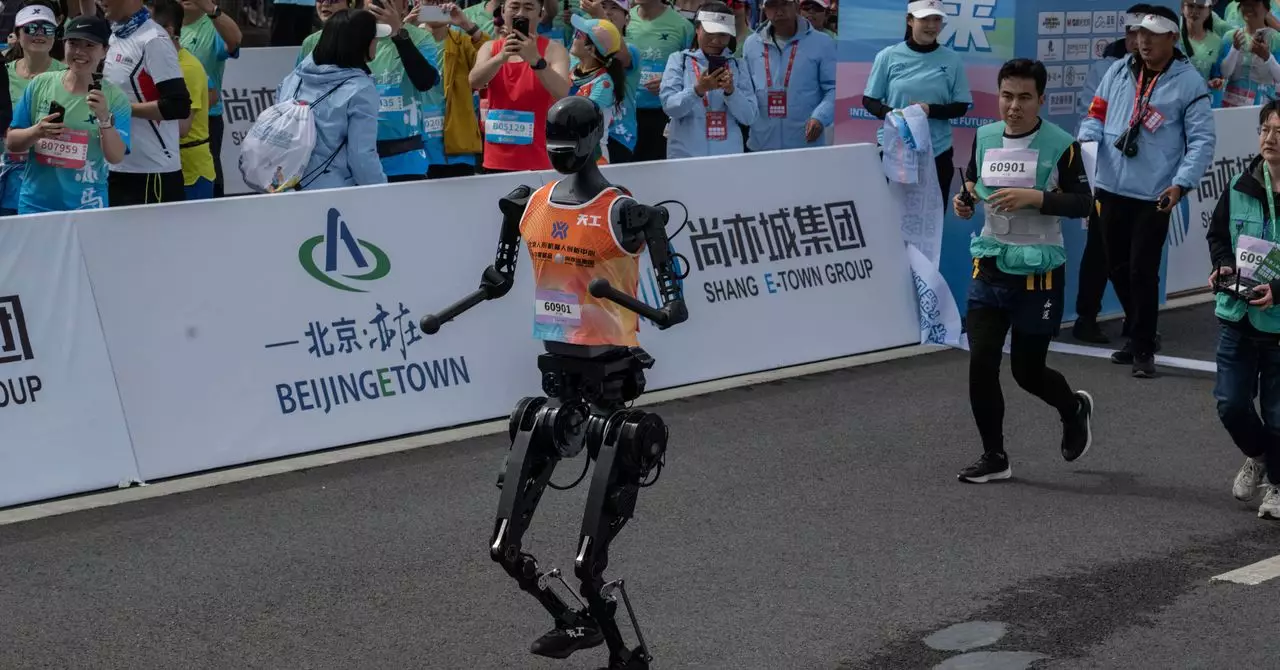In the realm of technological advancement, humanoid robots often find themselves at the intersection of entertainment and practicality. Despite their impressive abilities to perform tasks that might captivate an audience—like dancing, mimicking human actions, or even competing in quirky races—real progress in robotics should prioritize functional applicability over spectacle. Expert insights, such as those from robotics specialist Fern, emphasize the necessity for robots to demonstrate their utility in navigating the complexities of daily life, rather than simply showcasing impressive stunts that amuse spectators. As the field progresses, it is anticipated that innovators, particularly in leading nations like China, will pivot away from novelty acts toward developing humanoids that tackle real-world challenges.
The Race of the Future: What Really Matters?
The recent humanoid robot race serves as an illustrative case in point. While the event captured attention and showcased technical creativity, the essence of robotics should lie in their operational usefulness in diverse environments. It’s not about whether a robot can dance better than a human, or run a symbolic marathon. The operational benchmarks should include how adept these machines are at performing various tasks independently and efficiently. The spectacle of these humanoids was evident as participants of different sizes, ranging from a pint-sized 2 feet 5 inches to an impressive 5 feet 9 inches, took to the makeshift track. However, this diversity in stature obscured the more critical conversation surrounding this form of technology—what real-world problems can they solve?
Designing for Success: The Bipedal Requirement
The unifying factor for the robots at the competition was their bipedal nature, a requirement that sent teams scrambling for innovative design solutions. The manner in which these robots were crafted speaks volumes about the current stage of robotics. Many competitors appeared stripped down, foregoing nonessential elements like fingers or heads to minimize weight, essentially prioritizing functionality over aesthetic polish. Some competitors adorned their creations with childlike sneakers to enhance their footing, while others deployed protective knee pads to mitigate the effects of falling—indicative of the trial-and-error nature inherent to early robotics. The emphasis on bipedal locomotion challenges current engineering practices and raises an intriguing question: should future humanoid designs prioritize bipedalism, or should alternative mobility methods be considered to improve efficiency and efficacy?
Operational Pitfalls: A Dance of Errors
Much of the excitement and amusement derived from the race stemmed from the unpredictable performance of the robots. While Tiangong Ultra and the N2 robot from Noetix Robotics revealed a consistent, albeit slow, pace that brought them success, many competitors struggled tragically. The unfortunate performance of a robot named Huanhuan, which managed to move akin to a ‘snail on a leisurely stroll,’ reminded observers that advanced technology does not always correlate with functional performance. Other robots, such as Shennong, with its unusual design that resembled a clumsy amalgamation of various concepts, failed spectacularly at the start, reinforcing a harsh truth about current capabilities—design innovation does not inherently equate to operational success.
The use of duct tape as a makeshift repair tool illustrated a critical insight into robotics: the human element remains entrenched in the technology, often seen racing alongside their creations as impromptu handlers. The sight of an operator rescuing a dislodged head mid-race serves as a metaphor for the current intersection of robotics and human input. The reality is stark; despite the advancements touted by the industry, robots are still heavily reliant on human oversight and intervention, creating a unique relationship that raises questions about autonomy and self-sufficiency.
A Clear Vision: What Lies Ahead
In the spectrum of robotic development, it is clear that the novelty that draws public attention must evolve into substance. Fern’s perspective rings true: the future will pivot towards creating robots that demonstrate a capability for meaningful tasks instead of simply performing for applause. As we chart this new course, the industry must leverage the lessons learned—both from the failures of this race and the budding successes—to innovate in tangible ways that address real-world needs. The playful spirit of human-robot interaction must move beyond entertaining antics, transforming into a collaborative partnership aimed at enriching the human experience through technology.

